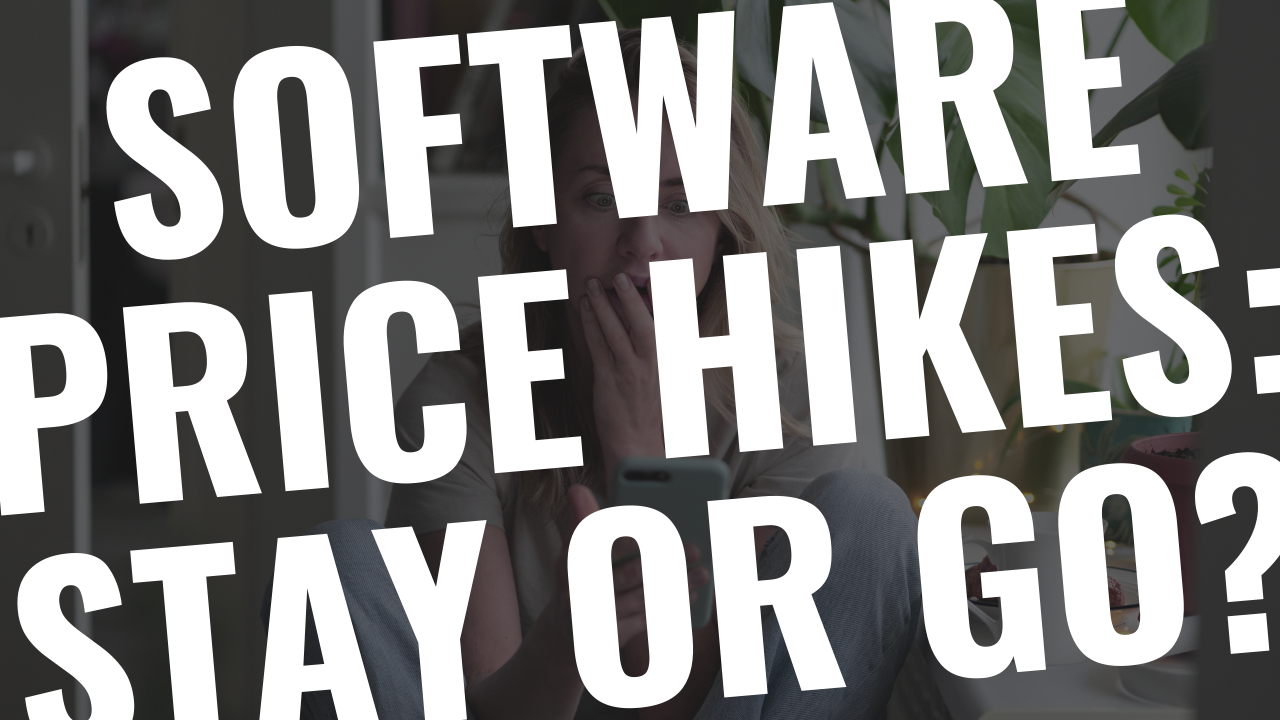Before you ditch your platform after a price hike, read this
If you’ve been online lately, you’ve probably seen the uproar: first Kit (affiliate link) announced a price increase, now Kajabi followed suit. And if you’ve ever been on social media when software raises prices… you know the pitchforks come out.
I get it. Price hikes sting. Especially when they show up in your inbox without much warning. Your first instinct might be to panic-cancel, start googling alternatives, or fire off a post about “who’s moving with me?”
But here’s one thing people rarely talk about: switching platforms has hidden costs.
Why moving isn’t as simple as it sounds
Canceling Netflix and signing up for Hulu is one thing. Canceling your email platform or course host and moving your entire business backend? Whole different story.
Here’s what often gets overlooked:
Time costs. Moving your products, emails, funnels, and automations isn’t a quick weekend project. It’s a headache that can drag on for weeks.
Revenue costs. If you run a membership and switch platforms, you might have to cancel everyone’s subscription and beg them to re-sign. Spoiler: many won’t.
Customer experience costs. Broken automations, missing emails, login issues… all of this creates friction for your customers and risks refunds or unsubscribes.
And those “cheaper” monthly savings can disappear fast when you realize how much revenue, time, and sanity you burned in the process.
When it does make sense to move
Not every platform change is bad. There are moments when it actually makes sense:
You’re brand new, with no products or systems set up yet. (Now’s the easiest time to experiment… but keep reading because cheaper isn’t always better)
The platform you’re on is truly limiting your growth – missing features, poor deliverability, clunky user experience.
The costs aren’t just financial – you’re spending more time fighting the software than serving your customers.
If that’s the case, moving could be the right long-term play.
When it doesn’t
If you already have paying customers, a membership, or a whole ecosystem of products and automations… think this decision through carefully. Most of the time, it’s easier (and way more profitable) to find an extra $50/month than it is to rebuild your backend from scratch.
That might mean:
Raising your prices slightly
Adding a quick downsell or upsell
Running a simple promo to cover the new costs
Much faster ROI than blowing up your systems.
Price increases aren’t always bad
I know – nobody likes paying more. But sometimes, paying more actually gets you a better product. Platforms evolve, add features, improve deliverability, and beef up customer experience. That’s not free for them to provide.
But making business decisions purely on “what’s cheapest” is usually short-sighted.
If you’re brand new and tempted by a free plan, think ahead: what will you need in 1-2 years when you’ve got multiple products, automations, or even a membership?
Moving from a bare-bones free tool to a robust paid platform later can be harder (and more expensive in hidden costs) than just starting with something solid now.
At the end of the day, you’re running a business. Expenses are normal, and good software should make you money back through saved time, smoother systems, and a better customer experience.
So instead of reacting or taking the price increase personally, look at whether the platform still fits your business needs – not just your budget.
My go-to alternative
If you are in the market for a switch, one option I recommend (and use myself) is Thrivecart (affiliate link). Their base plan is still lifetime access – no monthly fee, no surprise hikes down the line.
That means you pay once, set it up, and don’t have to worry about the “we’re raising prices” email ever again.
If you do the optional upgrade to Pro+, it’s only $295/year (and worth that and more in my opinion).
The takeaway
Don’t make a knee-jerk move just because your platform got more expensive. Think about the bigger picture: your time, your customers, and your revenue.
Because sometimes the most profitable move isn’t switching platforms – it’s staying put and focusing on making that extra revenue back.

